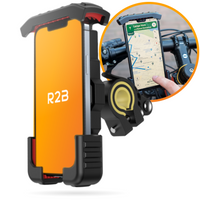No Products in the Cart

Which color running lights should you buy?
Time to read 2 min
Time to read 2 min
Running lights are indispensable for those who run in the dark or in poor visibility. They not only make you more visible to other road users, but also help you see obstacles in time. A frequently asked question is: which colour running lights should you choose? In this article we discuss the options and provide practical tips for the best choices.
The colour of lighting determines how visible you are and how others perceive your movements. Incorrect colour choices can limit your visibility, especially in low-light environments. In addition, colour plays a role in reducing glare, both for yourself and for others.
When choosing the color of your running lights, there are a few rules of thumb to keep in mind.
White light is the most commonly used color for lighting the front of the body. This has several advantages:
Visibility : White light is bright and ensures that you are clearly visible in dark conditions.
Obstacle Recognition : It provides a clear view of the road or path ahead.
Natural Light : White light mimics natural daylight, allowing you to see depth and detail better.
A white light of 3000-6000K (Kelvin) is ideal. This range produces a bright, cool light that is suitable for running in urban and rural areas.
Red light is the standard for rear lighting. This corresponds to the conventions in traffic, such as rear lights of vehicles. The advantages of red light:
Recognition : Other road users immediately understand that you are walking away from them.
Contrast : It clearly distinguishes itself from white light at the front.
Non-glare : Red light is gentler on the eyes, which is important for people behind you.
For visibility during the day or in twilight, fluorescent colours such as yellow, green and orange are particularly effective. These colours reflect more light and are noticeable even with fewer light sources. Many reflective clothing and accessories combine these colours with LED lighting.
In daylight or twilight, fluorescent yellow-green is most effective. These colours are highly visible in a variety of lighting conditions. Combine them with reflective strips to stand out even more.
In dark conditions, white and red are essential. White light in the front helps you see obstacles, while red light in the back makes your presence clear to others.
In fog, rain or snow, amber or yellow light is a good choice. These colours reduce reflection and provide better visibility than bright white light.
Choose lighting with multiple colors
Many running lights offer the option to switch between white and red light. This gives flexibility in different situations.
Pay attention to the light intensity
For urban areas, 100-150 lumens is usually sufficient. On unlit paths or during trail runs, 300 lumens or more is needed.
Use reflective clothing as a supplement
Lighting is important, but reflective strips on clothing or accessories can greatly increase your visibility, especially with approaching headlights. A reflective sports armband also helps.
Combine colors for maximum visibility
Use white light in the front, red light in the back and fluorescent accessories for extra contrast during the day.
Yellow light can be better in certain conditions, such as fog or rain. It reduces reflection and improves visibility. However, for general conditions, white light remains the best choice.
Blue light is not recommended for running. It provides less contrast and visibility, especially in traffic. It can also be disruptive to other road users.
Flashing lights attract more attention, which can be useful in busy or urban environments. However, use them sparingly, as they can confuse other road users.
